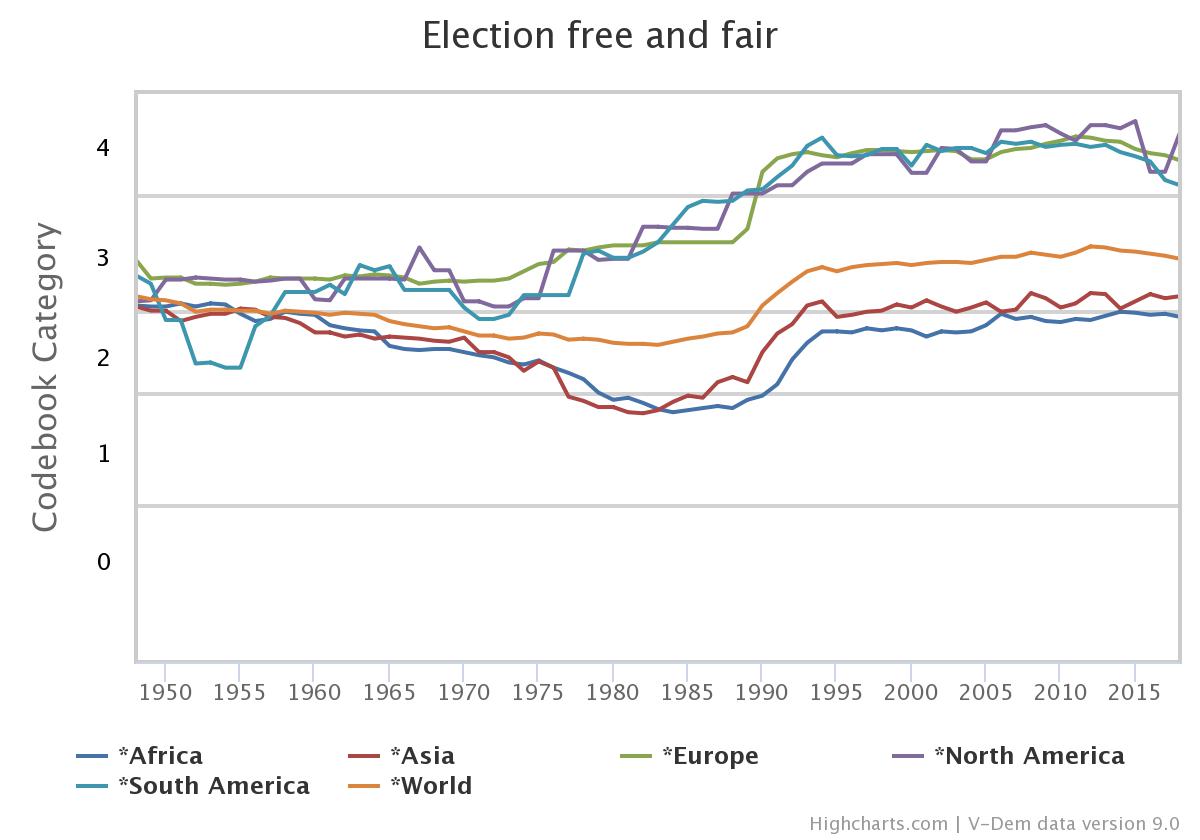Human Rights Day – Celebrating the Right to Free and Fair Elections, 1948-2018
By: V-Dem Staff
Dec 10, 2019
December 10th marks 71 years since the Universal Declaration of Human Rights (UDHR) was adopted by the United Nations General Assembly in 1948. This document was the first to encapsulate a set of rights that every single human being should be afforded regardless of nationality, gender, race, political opinion, religion or a multitude of other characteristics.
This week, we use the V-Dem data on free and fair elections to evaluate how the world has progressed since the adoption of the UDHR concerning article 21(3): “The will of the people shall be the basis of the authority of government; this will shall be expressed in periodic and genuine elections which shall be by universal and equal suffrage and shall be held by secret vote or by equivalent free voting procedures.”
The V-Dem indicator ‘Election free and fair’ ranges from 0 to 4, with lower scores indicating less free and fair elections. This variable is shown below for the regions of the world and the world as a whole.
Despite a dip in the mid-60s to 80s, the level of free and fair elections has increased slightly over the last 71 years since the passing of the UDHR and currently hovers around 2.75. Two different groupings are present in the graph and the divergence of Europe, North America, and South America from Africa and Asia around 1975 is clearly noticeable, manifesting further in the average illustrated through the World line.
The full UDHR text is available here. Ohter V-Dem indicators related to the declaration articles are ‘Freedom from torture’ (Article 5), ‘Equality before the law and individual liberty index’ (Article 7), and ‘Freedom of domestic movement’ (Article 13.1). Visit v-dem.net to check these indicators using our free online analysis and graphing tools!


